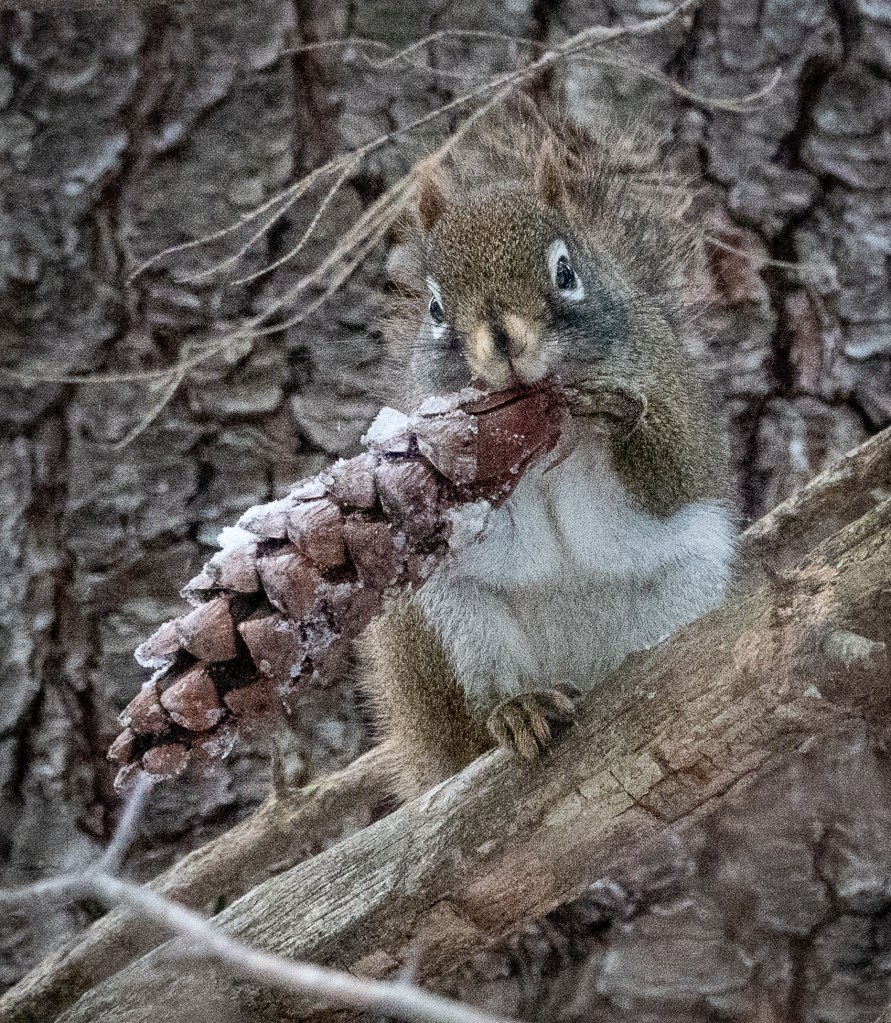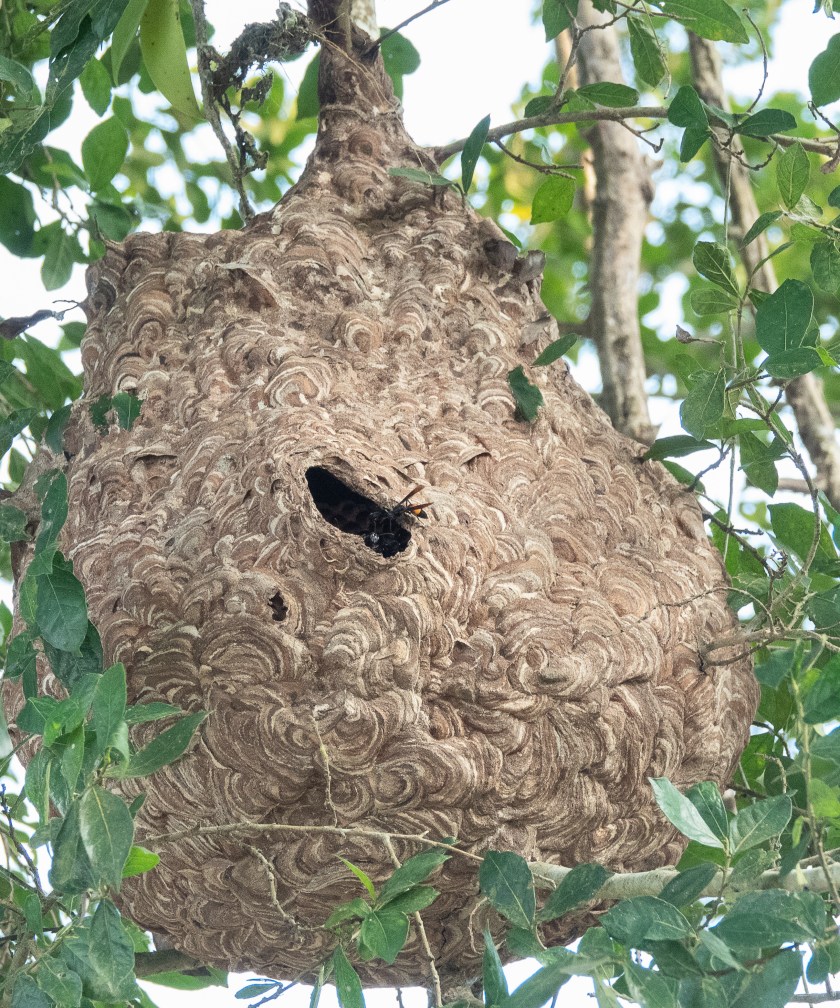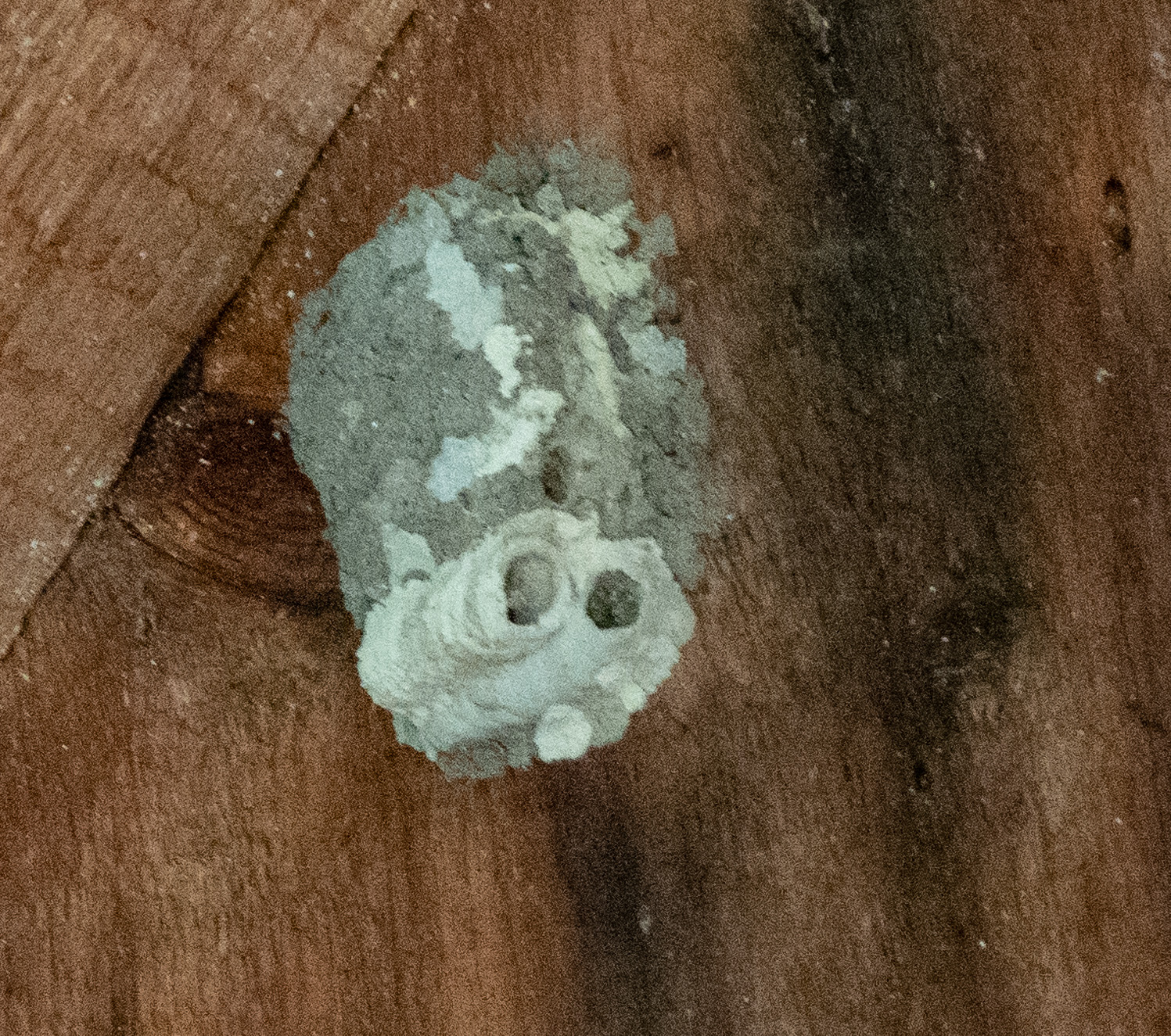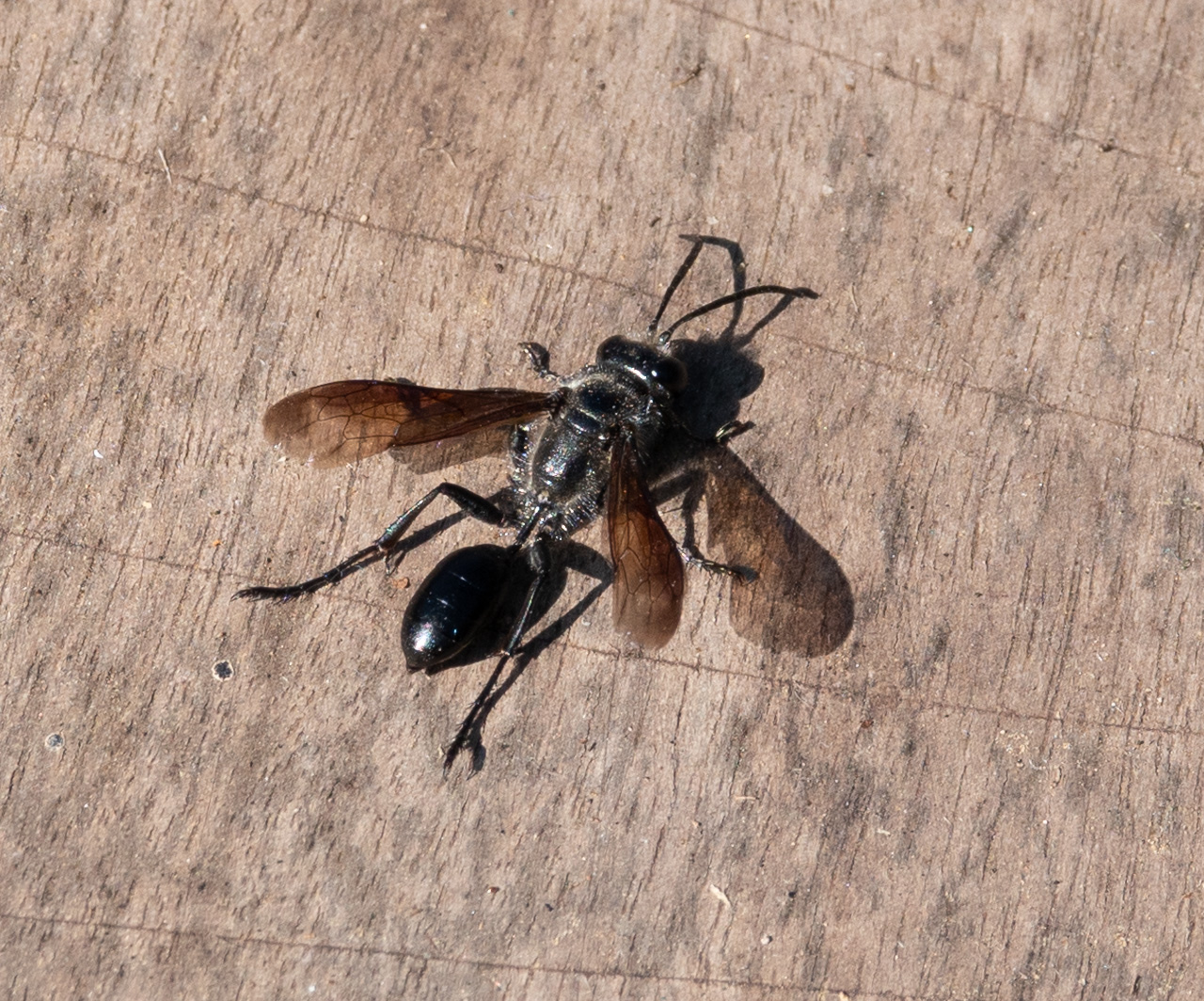[I’m sending this out before Christmas picks up steam, and then I will go dark till the New Year, unless something so special happens I cannot resist. I do hope you are able to enjoy your holidays, in whatever form they take in this strange year.]
In winter our bird-feeder is close to the house and visible from the kitchen, and from my desk . It attracts chickadees, tufted titmouses (titmice??), red squirrels, downy and hairy woodpeckers, cardinals, and lots of bluejays. The other morning there were eight at once, feeding on the ground beneath the feeder. By tea-time, there were seven.
A Sharp-shinned Hawk, Accipter striatus, swooped in and pinned one unwary bluejay to the ground on the opposite side of the trellis that supports the bird feeder. My first shot is taken through the window, and through the trellis, but the fierceness of this small hawk is clear. He is not much bigger than the bluejay (both measure 11 inches, but the hawk weighs 5oz to the bluejay’s 3oz), nevertheless it didn’t have a chance.

The hawk held it down, and started to pluck it, while it struggled in vain.
The hawk went for an area of soft dark feathers on the breast underneath the wing, and afterwards when I searched the crime scene there was not a single larger feather removed, only tiny dark downy ones:
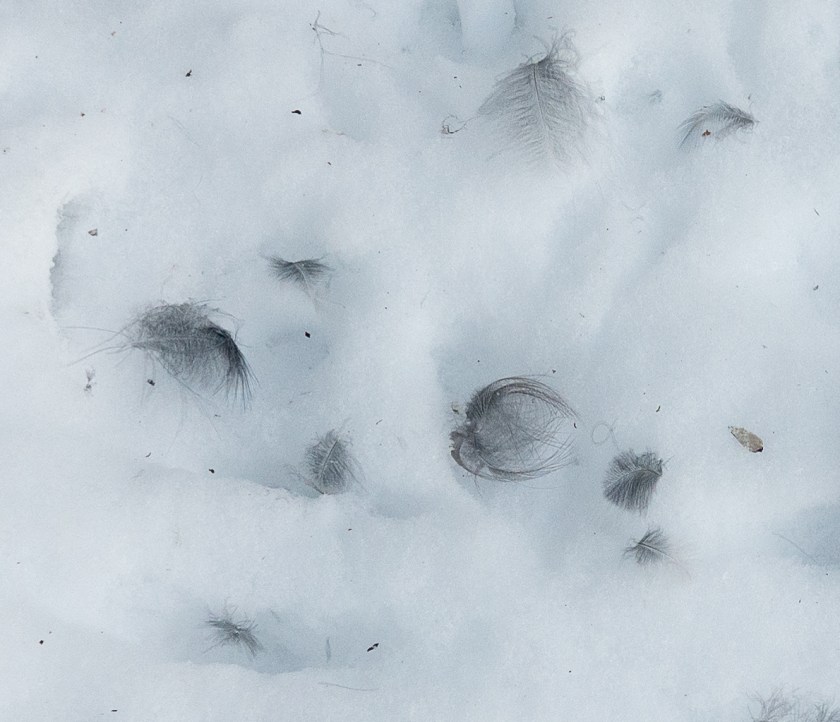
Eventually I decided to risk opening the window to take better photos, and it flew off, but only a short distance, where it thoughtfully settled in full view and started to feed in earnest. This hawk is mantling, spreading and dropping its wings to hide its prey from other predators, such as larger hawks of coyotes.
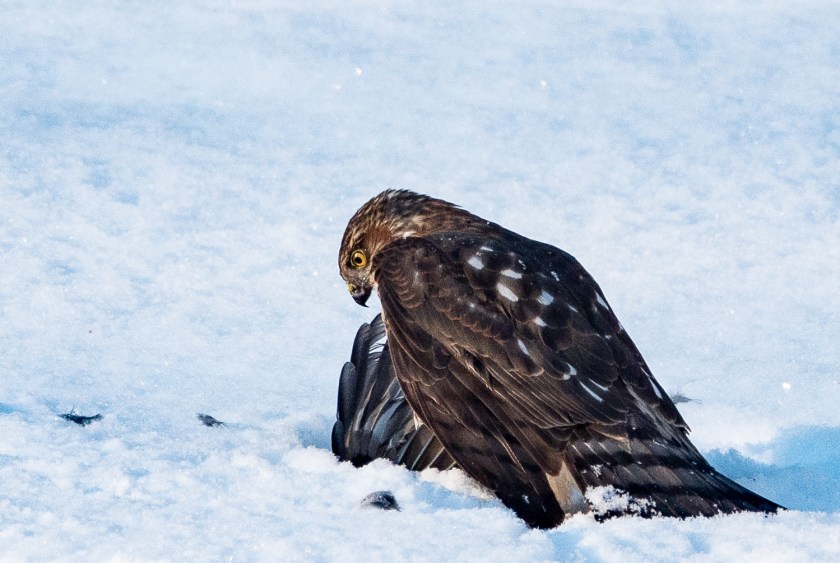
It reminds me of an avenging angel fixing its stony gaze on its hapless victim:

When a hawk has just killed it does not feed elegantly; it rips out chunks of meat, feeding fast before predators come, taking the edge off its hunger, and storing extra chunks in its crop for later regurgitation and digestion:

I feared at times that the poor jay was still struggling, but it may just have been the hawk shaking its prey. At one point it lifted it and moved it, as if to get a better angle, which was very thoughtful of it from my point of view:
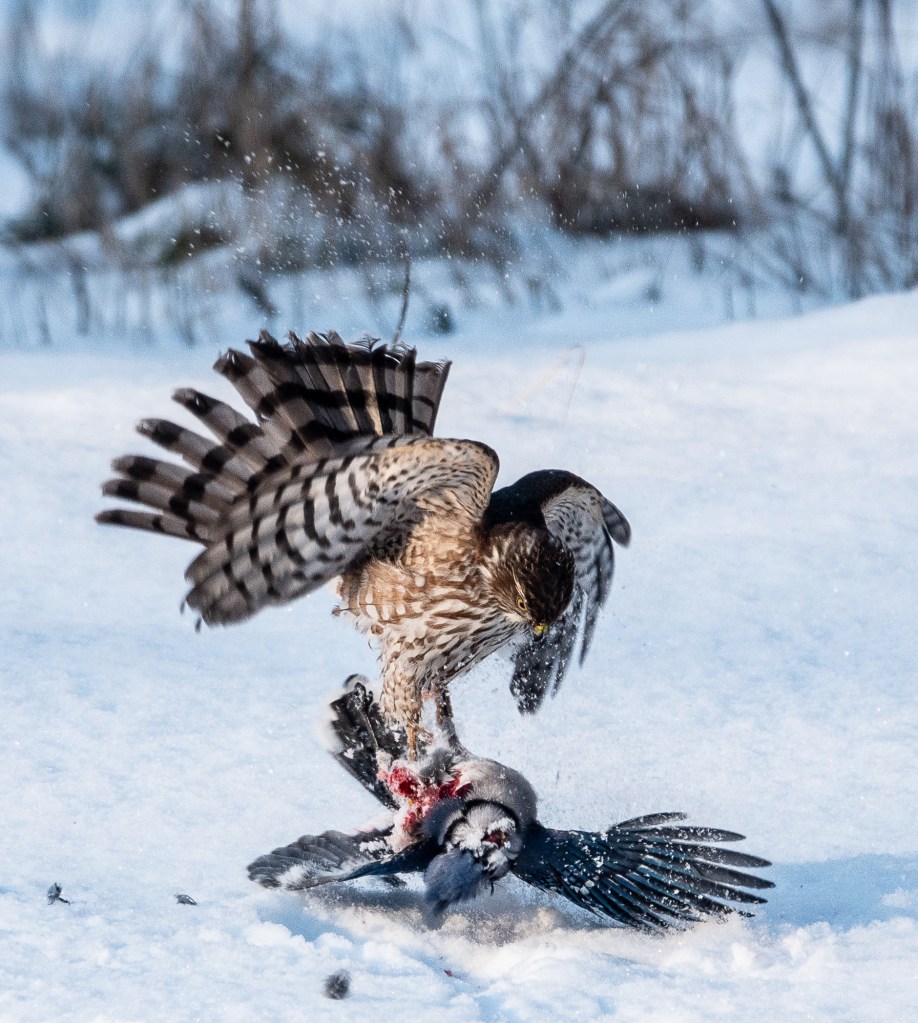
And then it paused, called,

and took off, the bluejay in one talon, and headed for the woods, there to finish its meal in privacy.

My husband now refers to our sunflower seed repository as “the hawk feeder”. I fear he will be back, but meanwhile the blue jays have returned this morning, undeterred.
PS The Sharp-shinned Hawk gets its name from its un-feathered scrawny lower legs.
